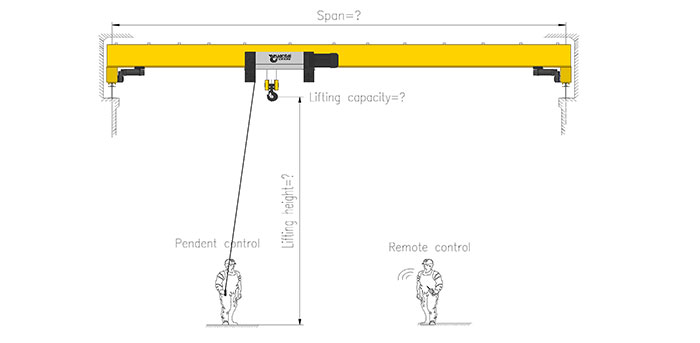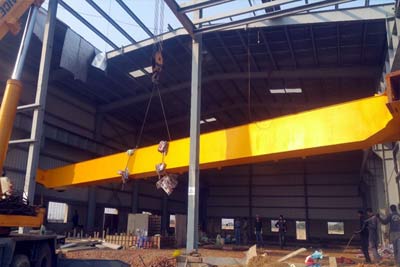Overhead cranes, sometimes referred to as bridge cranes or industrial cranes, are versatile lifting machines used in various industries across Oman and the world. These powerful machines are designed to hoist, move, and position heavy loads with precision and efficiency. In this section, we'll dive deeper into the world of overhead cranes, shedding light on what they are, the different types available, and the critical importance of selecting the right crane for specific applications. We'll also explore the safety considerations and regulations that govern their use.
What Are Overhead Cranes?
Overhead cranes are heavy-duty machines consisting of a horizontal beam (bridge), a trolley that moves along the bridge, and a hoist or hook suspended from the trolley. This configuration allows them to lift and transport heavy loads horizontally within a defined area.
Overhead Cranes for sale in Oman
Oman's diverse industrial landscape demands a range of overhead crane types to meet specific material handling needs. In this section, we'll provide detailed descriptions of various overhead crane types commonly available in Oman. We'll explore the features, benefits, and common applications for each crane type, equipping you with the knowledge needed to make an informed choice based on your industry and use case.
Varieties of Overhead Cranes:
- Overhead cranes come in several types, each tailored to specific industrial applications. These types include:
- Single Girder Bridge Cranes: Featuring one bridge girder, these cranes are commonly used for lighter loads and in facilities where space is limited.
- Double Girder Bridge Cranes: These cranes have two bridge girders and are ideal for heavier loads and applications requiring higher lifting capacities.
- Gantry Cranes: Similar to bridge cranes, gantry cranes are designed to straddle an object or workspace, providing versatility for both indoor and outdoor use.
- Jib Cranes: Jib cranes consist of a horizontal arm that pivots around a vertical post. They are often used for localized lifting and positioning tasks.
- Monorail Cranes: Monorail cranes run on a single track, making them suitable for linear material movement within a defined area.
- Container Cranes (Ship-to-Shore Cranes): These specialized cranes are used in ports and maritime terminals to handle shipping containers, boasting high lifting capacities and efficiency.
- Heavy-Duty Double Girder Bridge Cranes: Designed for extremely heavy loads, these cranes are commonly used in industries like steel manufacturing and heavy machinery.
Bridge Cranes (Single Girder):
- Features: Single girder configuration, overhead bridge spanning the workspace, hoist and trolley system.
- Applications: Light to moderate lifting requirements, assembly lines, workshops, warehouses.
- Pros: Cost-effective, compact design, easy installation, suitable for limited headroom.
- Cons: Limited lifting capacity compared to double girder cranes.
Bridge Cranes (Double Girder):
- Features: Two parallel girders, overhead bridge spanning the workspace, hoist and trolley system.
- Applications: Heavy-duty lifting requirements, manufacturing facilities, steel mills, power plants.
- Pros: High lifting capacity, superior stability, suitable for long spans, versatile applications.
- Cons: Higher initial investment, requires more space compared to single girder cranes.
Underslung Cranes:
- Features: Suspended from the ceiling structure, hoist and trolley system.
- Applications: Workstations, production lines, low headroom areas.
- Pros: Maximizes floor space, suitable for low headroom applications, smooth movement.
- Cons: Limited lifting capacity, requires strong support structure.
Gantry Cranes:
- Features: Supported by legs or wheels on the ground, overhead bridge, hoist and trolley system.
- Applications: Outdoor operations, construction sites, shipping yards, bulk material handling.
- Pros: Flexible movement, suitable for uneven ground, portable options available.
- Cons: Requires a larger footprint, limited height clearance compared to bridge cranes.
Jib Cranes:
- Features: Vertical mast, horizontal boom, hoist and trolley system.
- Applications: Workstations, maintenance and repair areas, loading/unloading small items.
- Pros: Compact design, easy installation, 360-degree rotation, precise positioning.
- Cons: Limited coverage area, lower lifting capacity compared to bridge or gantry cranes.
Monorail Cranes:
- Features: Single rail system, hoist and trolley system running along the rail.
- Applications: Assembly lines, warehouses, repetitive material handling tasks.
- Pros: Space-saving design, customizable layout, cost-effective, easy installation.
- Cons: Limited coverage area, lower lifting capacity compared to bridge or gantry cranes.
Importance of Selecting the Right Crane:
- Choosing the right overhead crane is paramount for achieving efficiency, safety, and cost-effectiveness in industrial operations. Here's why selecting the appropriate crane matters:
- Optimized Efficiency: The right crane type ensures efficient material handling, reducing downtime and boosting productivity.
- Safety: Properly matched cranes reduce the risk of accidents, ensuring the safety of both personnel and valuable equipment.
- Cost Savings: Avoiding over-specification or under-specification of crane capacity leads to cost savings in the long run by optimizing energy usage and minimizing maintenance.
- Longevity: A well-matched crane is likely to have a longer service life, providing a better return on investment.
Safety Considerations and Regulations:
- Safety is paramount when it comes to overhead crane operations. To ensure safe usage, several factors and regulations must be considered:
- Load Limits: Cranes must not exceed their rated load capacity to prevent accidents and equipment damage.
- Operator Training: Certified and trained crane operators are crucial for safe crane operation.
- Regular Inspections: Routine inspections and maintenance are essential to identify and rectify any issues before they become hazardous.
- Safety Devices: Overhead cranes are equipped with various safety features, including limit switches, emergency stop buttons, and overload protection systems.
- Compliance with Regulations: Overhead crane usage must adhere to local, national, and international safety regulations and standards, such as those set by the Ministry of Manpower in Oman.
Understanding the fundamentals of overhead cranes, their types, and the importance of choosing the right crane sets the stage for making informed decisions when selecting the perfect crane for your specific applications in Oman's diverse industrial landscape.
Identifying Your Overhead Crane Needs
In the world of overhead cranes, one size does not fit all. Selecting the right crane for your projects in Oman is a crucial decision that hinges on understanding your specific requirements. This section provides a step-by-step guide to help you assess and identify your overhead crane needs. We'll explore essential factors to consider, including load capacity, span, lifting height, and environmental conditions. To underscore the importance of tailored crane selection, we'll also share real-world examples and case studies.
Step 1: Project Assessment
- Begin by conducting a comprehensive assessment of your project. Consider the following questions:
- What type of materials or loads will the crane handle?
- What is the frequency of lifting and moving loads?
- Is the crane for indoor or outdoor use?
- Are there any spatial limitations or obstacles in the workspace?
Step 2: Load Capacity -- Determining the load capacity of your overhead crane is paramount. To do this, calculate the maximum weight of the loads you'll be lifting. Keep in mind potential future growth in load sizes.
Step 3: Span and Lifting Height -- The span of the crane (the distance between the runways or supporting structures) and the lifting height (the vertical distance the crane can lift) are critical considerations. Measure the dimensions of your workspace to ensure the crane fits comfortably and can lift materials to the required heights.
Step 4: Environmental Conditions -- Consider the environmental conditions in which the crane will operate. Oman's climate, which includes high temperatures and occasional sandstorms, may require special features such as heat-resistant materials and dust protection.
Step 5: Special Features and Customizations -- Think about any specific features or customizations that may be necessary for your project. These could include specialized hooks, attachments, or control systems tailored to your industry's unique requirements.
Sourcing Overhead Cranes: Why Consider China
When it comes to sourcing overhead cranes for your projects in Oman, China emerges as a compelling choice. In this section, we'll delve into why China has earned its reputation as a reliable crane manufacturer and explore the advantages of sourcing overhead cranes from China. We'll also share success stories and testimonials from businesses in Oman that have opted for Chinese crane suppliers, showcasing the real-world benefits of this choice.
China: A Reputation for Reliability
- Overview: China's manufacturing prowess is renowned globally, and its crane industry is no exception. Chinese crane manufacturers have built a strong reputation for reliability, innovation, and quality.
- Advantages of Chinese Crane Manufacturers:
- Cost-Effectiveness: Chinese manufacturers often offer competitive pricing without compromising on quality, making them an attractive option for cost-conscious buyers.
- Quality Assurance: Many Chinese crane manufacturers adhere to international quality standards and certifications, ensuring that their products meet or exceed industry requirements.
- Customization Expertise: China's crane manufacturers excel in customization, tailoring cranes to match specific project needs and environmental conditions.
- Innovation and Technology: Chinese crane manufacturers are at the forefront of crane technology, integrating advanced features for improved safety and efficiency.
Advantages of Sourcing Overhead Cranes from China
When considering China as your source for overhead cranes in Oman, several advantages come to the forefront:
- Cost-Effectiveness: Chinese manufacturers often provide competitive pricing without compromising on quality. This cost-effectiveness can translate into significant savings for your projects.
- Quality Assurance: Many Chinese crane manufacturers adhere to rigorous quality control standards and have obtained certifications such as ISO and CE. This ensures that the cranes you purchase meet or exceed industry benchmarks for safety and performance.
- Customization Options: Chinese crane manufacturers excel in customization, allowing you to tailor your crane precisely to your project's requirements. Whether it's unique load capacities, specialized control systems, or adaptations for Oman's environmental conditions, customization options abound.
- Innovation and Technology: China's crane industry is characterized by innovation and technological advancements. When you choose a Chinese crane, you're likely to benefit from state-of-the-art features that enhance safety, efficiency, and precision.
- Global Presence: Many Chinese crane manufacturers have a global presence, with established networks and after-sales service centers. This ensures reliable support even in Oman's remote locations.
Evaluating Chinese Overhead Crane Manufacturers
Now that you're considering Chinese manufacturers as potential suppliers for your overhead crane needs in Oman, it's essential to evaluate and select a reputable partner. In this section, we'll provide valuable tips on how to research and choose the right Chinese crane manufacturer. We'll outline key factors to consider, including certifications, experience, and customer reviews, and provide a list of questions to ask potential suppliers. Additionally, we'll highlight red flags to be cautious of during your evaluation.

At Yuantai Crane's factory, your crane manufacturer in China
Tips on Research and Selection:
- 1. Certifications and Compliance:- Ensure that the Chinese crane manufacturer adheres to international quality and safety standards, such as ISO and CE certifications.
- 2. Experience and Track Record:- Research the manufacturer's history and track record. Consider their experience in supplying cranes to industries similar to yours.
- 3. Customer References:- Request references or case studies from the manufacturer to gauge their past performance and customer satisfaction levels.
- 4. Online Presence:- Explore the manufacturer's website, social media profiles, and online presence. Look for testimonials and product information.
- 5. Trade Shows and Industry Involvement:- Participation in industry trade shows and associations can be an indicator of a manufacturer's commitment to quality and innovation.
Key Factors to Consider:
- 1. Product Range and Customization:- Assess whether the manufacturer offers a wide range of crane types and customization options to meet your specific requirements.
- 2. Quality Assurance:- Inquire about the manufacturer's quality control processes and their commitment to delivering reliable and durable cranes.
- 3. After-Sales Support:- Evaluate the availability of after-sales service and support, including maintenance, spare parts, and technical assistance.
- 4. Cost Transparency:- Ensure that pricing is transparent and includes all necessary components, shipping, and installation costs.
Questions to Ask Potential Suppliers:
- 1. What certifications does your company hold, and how do you ensure product quality and safety?
- 2. Can you provide references or case studies from similar projects or industries?
- 3. Do you offer customization options to tailor cranes to our specific requirements?
- 4. What is the lead time for crane production and delivery to Oman?
- 5. What kind of after-sales support and maintenance services do you provide?
- 6. What is your warranty policy for overhead cranes?
Red Flags to Watch Out For:
- 1. Lack of Certifications: Manufacturers without relevant certifications or unwilling to share their certification information may not meet international quality standards.
- 2. Unrealistic Promises: Be cautious of manufacturers making overly ambitious promises or guarantees that seem too good to be true.
- 3. Poor Communication: Difficulty in reaching or communicating with the manufacturer can indicate potential issues with customer support.
- 4. Negative Customer Feedback: Pay attention to customer reviews and feedback, especially if there are consistent complaints about product quality or service.
Evaluating Chinese overhead crane manufacturers requires thorough research and due diligence. By considering the factors mentioned above and asking the right questions, you can make an informed choice that aligns with your specific project needs in Oman.
In the next section, we'll explore the customization and design options available when working with Chinese manufacturers to ensure your overhead crane is tailored perfectly to your requirements.
Customization and Design Options
One of the distinct advantages of sourcing overhead cranes from Chinese manufacturers is the ability to customize and design cranes tailored precisely to your project requirements in Oman. In this section, we'll explore how Chinese manufacturers excel in providing customized solutions. We'll provide examples of customization options, including control systems, hoists, and safety features, and highlight the benefits of having a crane designed to suit Oman's unique environmental conditions.
Tailored Solutions from Chinese Manufacturers:
Chinese crane manufacturers understand the importance of offering tailored solutions to meet diverse project needs. Here's how they can provide customized overhead cranes:
- 1. Load Capacity: Manufacturers can design cranes with specific load capacities, ensuring that your crane is perfectly matched to your material handling requirements.
- 2. Span and Lifting Height: Cranes can be customized to match the exact dimensions of your workspace, maximizing efficiency and safety.
- 3. Control Systems: Choose from a range of control systems, including traditional pendant controls, radio remote controls, or advanced PLC-based systems for precise handling.
- 4. Hoist Selection: Customize the hoist type, whether wire rope or chain hoists, to suit your application and load characteristics.
- 5. Environmental Adaptations: Given Oman's climate, Chinese manufacturers can design cranes with features such as heat-resistant materials, dust protection, and corrosion resistance.
Examples of Customization Options:
- 1. Control Systems: Chinese manufacturers offer advanced control systems that allow for precise and efficient crane operation. PLC-based controls can be programmed to execute complex lifting sequences with ease.
- 2. Hoists and Hooks: Depending on your material handling needs, you can choose from a variety of hoist types and hooks, such as electromagnetic lifting for metalworking or specialized hooks for unique load shapes.
- 3. Safety Features: Customized safety features can include overload protection, anti-sway technology, collision avoidance systems, and emergency stop mechanisms.
- 4. Environmental Adaptations: In Oman's challenging climate, Chinese manufacturers can design cranes with heat-resistant components and protective coatings to withstand high temperatures and dust.
Benefits of Customization for Oman:
- 1. Enhanced Efficiency: A customized crane is optimized for your specific tasks, ensuring that materials are handled efficiently and productively.
- 2. Improved Safety: Tailored safety features reduce the risk of accidents, protecting both personnel and valuable equipment.
- 3. Longevity and Reliability: A crane designed for Oman's environmental conditions is likely to have a longer service life, reducing downtime and maintenance costs.
- 4. Adaptability: Customization ensures that your crane can adapt to the evolving needs of your projects in Oman, promoting long-term operational flexibility.
In Oman's dynamic industrial landscape, having an overhead crane designed to meet your precise requirements can make a significant difference in productivity, safety, and cost-effectiveness. Chinese manufacturers excel in providing these tailored solutions, making them a compelling choice for your overhead crane needs.
In the next section, we'll guide you through the purchasing process, helping you navigate the steps from inquiry to delivery when acquiring your customized overhead crane.
The Purchasing Process
Now that you've gained insights into overhead cranes, their types, customization options, and the advantages of sourcing from China, it's time to navigate the purchasing process. In this section, we'll provide step-by-step guidance on purchasing an overhead crane, from your initial inquiry to the delivery of the crane in Oman. We'll help you understand pricing structures and negotiation strategies, as well as import regulations and customs considerations when importing from China to Oman.
- Step 1: Define Your Requirements -Begin by clearly defining your project requirements, including load capacity, span, lifting height, customization options, and any specific features needed for Oman's environmental conditions.
- Step 2: Research and Select Manufacturers -Based on your requirements, research and select potential Chinese crane manufacturers. Consider factors such as certifications, experience, customer references, and customization capabilities.
- Step 3: Request Quotations - Contact the selected manufacturers and request detailed quotations for the overhead crane that meets your specifications. Ensure that the quotations include all relevant costs, such as shipping and installation.
- Step 4: Pricing Structures and Negotiation:- Understand the pricing structure, including the breakdown of costs. Be prepared to negotiate with manufacturers to achieve a competitive price that fits your budget.
- Step 5: Place an Order- Once you've selected a manufacturer and negotiated terms, place an order for your customized overhead crane. Review the contract carefully to ensure that it reflects the agreed-upon specifications and delivery timeline.
- Step 6: Production and Quality Control- During the production phase, manufacturers will build and customize your crane. Reputable manufacturers conduct rigorous quality control checks to ensure that the crane meets the agreed-upon standards.
- Step 7: Shipment and Logistics- Coordinate with the manufacturer on the shipment and logistics of your crane. Consider factors such as shipping method, delivery timeline, and any necessary customs documentation.
- Step 8: Import Regulations and Customs:- Familiarize yourself with import regulations and customs requirements in Oman. Ensure that all necessary permits and documentation are in order to facilitate a smooth customs clearance process.
- Step 9: Installation and Commissioning- Upon the crane's arrival in Oman, arrange for its installation and commissioning by experienced technicians. Ensure that the installation adheres to safety standards and regulations.
- Step 10: Training and Maintenance- Train your operators and maintenance personnel on the safe and efficient operation of the crane. Establish a maintenance schedule to ensure the crane's long-term reliability.
Navigating the purchasing process for an overhead crane requires careful planning and attention to detail. By following these steps and understanding the nuances of pricing, negotiation, and import regulations, you can acquire a customized overhead crane that enhances your project's efficiency and productivity in Oman.
In the final section of this comprehensive guide, we'll summarize the key takeaways and advantages of choosing China as your source for overhead cranes in Oman, reaffirming the benefits of this strategic decision.
Installation, Training, and Maintenance
As you approach the final stages of acquiring your overhead crane for projects in Oman, it's crucial to address key aspects related to installation, training, and maintenance. In this section, we'll emphasize the importance of proper crane installation and commissioning, outline the role of manufacturers in training operators and maintenance personnel, and provide tips for ongoing maintenance to ensure the longevity and safety of your crane.
Proper Crane Installation and Commissioning:
- The installation and commissioning phase of your overhead crane is a critical step that can significantly impact its performance and safety. Here's why it's essential:
- Safety: Proper installation ensures that the crane operates safely, minimizing the risk of accidents and damage to equipment or materials.
- Efficiency: Correct installation and alignment maximize the crane's efficiency, reducing downtime and enhancing productivity.
Manufacturer's Training for Operators and Maintenance Personnel:
- Reputable crane manufacturers often offer training programs for operators and maintenance personnel. Here's how this training can benefit your operations:
- Safe Operation: Training equips operators with the knowledge and skills to operate the crane safely, including load handling techniques and emergency procedures.
- Efficiency: Proper training improves crane operation efficiency, minimizing errors and delays in material handling.
- Maintenance Expertise: Training for maintenance personnel covers routine maintenance tasks, helping to identify and address issues promptly to prevent downtime.
Tips for Ongoing Maintenance:
To ensure the longevity and safety of your overhead crane in Oman, consider these maintenance tips:
- Routine Inspections: Implement a schedule of routine inspections to identify wear and tear, loose components, or potential issues.
- Lubrication: Proper lubrication of critical components, such as hoist chains and wire ropes, helps reduce friction and prolong component life.
- Spare Parts Inventory: Maintain an inventory of essential spare parts to address issues promptly and minimize downtime.
- Emergency Response Plan: Develop an emergency response plan that includes procedures for addressing crane-related accidents or failures.
- Operator Feedback: Encourage operators to report any unusual sounds, behaviors, or issues with the crane promptly.
Conclusion: Ensuring Safety and Efficiency
Proper installation, training, and ongoing maintenance are essential elements in ensuring the safety and efficiency of your overhead crane in Oman. By giving due attention to these aspects, you can maximize the performance and longevity of your crane while safeguarding your personnel and assets.
In the final section of this comprehensive guide, we'll recap the key takeaways and advantages of choosing China as your source for overhead cranes in Oman, reaffirming the benefits of this strategic decision.
Conclusion and Final Thoughts
As we conclude this comprehensive guide to overhead cranes for sale in Oman, we want to recap the key points discussed, encourage you to make informed decisions when selecting overhead cranes, and leave you with a final persuasive message about the benefits of considering Chinese crane manufacturers.
Recap of Key Points:
- We started by understanding the importance of selecting the right overhead crane tailored to your specific needs in Oman's diverse industrial landscape.
- We explored various types of overhead cranes, their features, benefits, and common applications, helping you identify the best fit for your industry and use case.
- The advantages of sourcing overhead cranes from China, including cost-effectiveness, quality, and customization options, were highlighted, supported by real-world success stories.
- We provided guidance on evaluating Chinese overhead crane manufacturers, emphasizing factors such as certifications, experience, and customer reviews.
- Customization and design options were discussed, showcasing how Chinese manufacturers can create cranes perfectly suited to Oman's unique environmental conditions.
- The purchasing process, pricing structures, and import regulations were demystified to help you navigate the acquisition of your customized overhead crane.
- The importance of proper installation, training, and maintenance in ensuring safety and efficiency throughout the crane's lifecycle was underscored.
- Real-world case studies demonstrated the positive impact of Chinese overhead cranes on productivity and efficiency in Oman.
Selecting the right overhead crane is not just a business decision; it's an investment in the success of your projects and the safety of your personnel. By following the guidance provided in this comprehensive guide, you are empowered to make informed choices that align with your specific requirements and industry standards.
Consider China for Your Overhead Crane Needs:
China has emerged as a top choice for overhead cranes in Oman, and for good reason. Chinese crane manufacturers offer a winning combination of cost-effectiveness, quality assurance, customization options, and technological innovation. The success stories shared in this guide serve as testament to the real-world benefits that businesses in Oman have experienced by choosing Chinese overhead cranes.
In a rapidly evolving industrial landscape, staying competitive means optimizing your material handling processes. By considering Chinese crane manufacturers, you not only access cutting-edge technology and customization but also cost-efficient solutions that can enhance your bottom line.
In closing, we encourage you to explore the opportunities that Chinese overhead cranes present for your projects in Oman. As you embark on this journey, remember that the right crane is more than equipment; it's a partner in your success story. If you have any need, please feel free to contact us now.



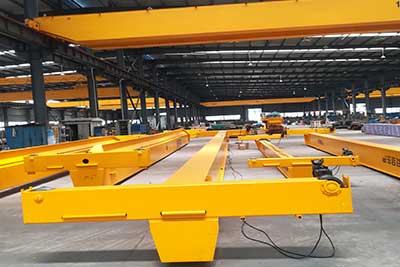
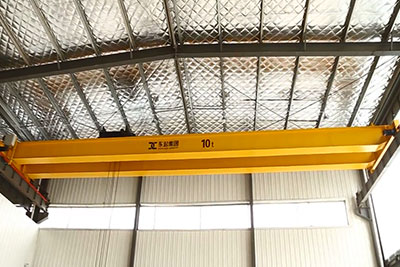
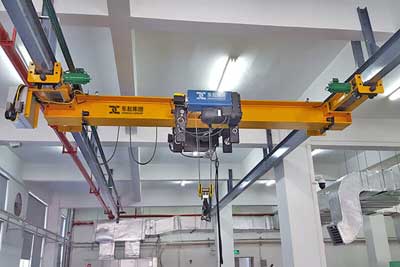
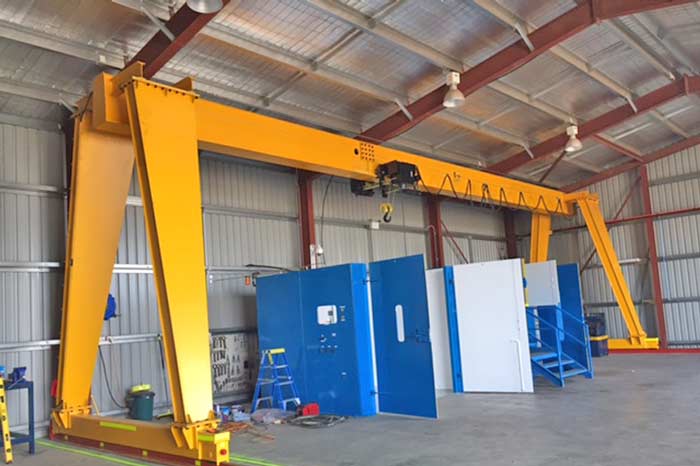
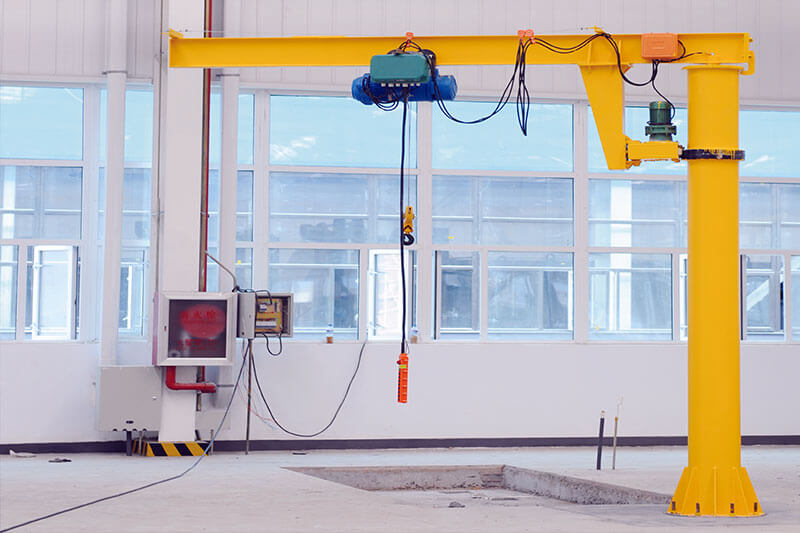
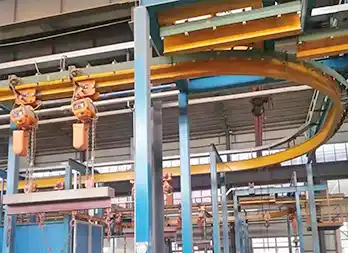
 At Yuantai Crane's factory, your crane manufacturer in China
At Yuantai Crane's factory, your crane manufacturer in China 